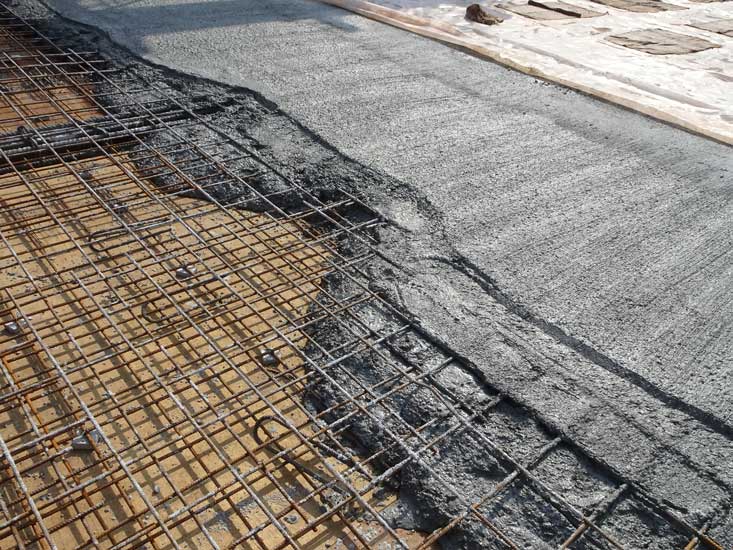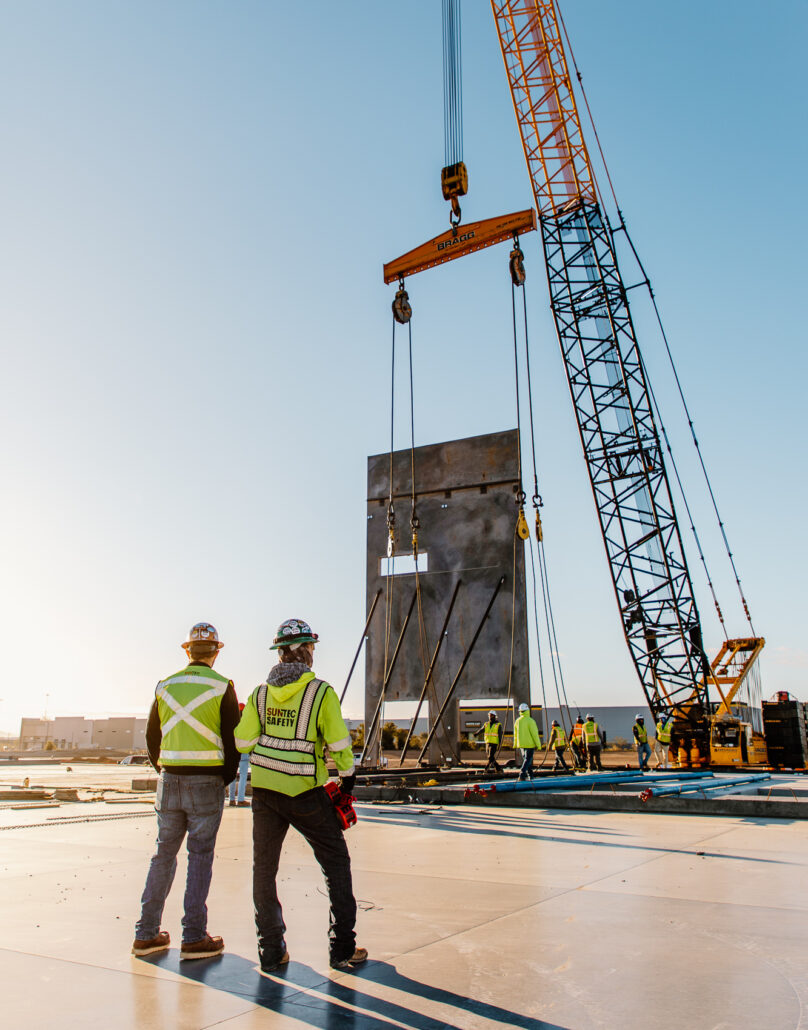5 Questions You Must Ask Your West Coast GE Concrete contractors Before Breaking Ground
5 Questions You Must Ask Your West Coast GE Concrete contractors Before Breaking Ground
Blog Article
The Crucial Function of Concrete Structure in Structural Integrity and Longevity
When it pertains to developing a building, the structure is a lot more important than you might think. Concrete foundations offer unequaled toughness and durability, guaranteeing your framework can endure various ecological difficulties. Without a solid base, you risk potential problems like moving or cracking, which can endanger safety and worth. Recognizing the subtleties of concrete foundations could be the trick to preserving your investment for several years to find. What should you take into consideration next?
Understanding the Value of Concrete Foundations
Concrete foundations are important to the general security of any kind of structure, as they supply the vital support required to withstand numerous tons and environmental conditions. When you consider building a home or a commercial area, the foundation is the first thing you ought to take into consideration. It works as an obstacle against wetness, safeguarding your property from water damages. A well-placed concrete structure additionally stops settling and changing, which can cause fractures in wall surfaces and floors. You'll want to assure that the foundation is appropriately designed and reinforced, as this influences the long life of your building. In addition, a solid foundation can boost energy performance by reducing air leaks. Remember, ignoring the importance of a concrete foundation can lead to expensive repairs down the line. Spending in a quality foundation upfront is essential for the stability and longevity of your structure.
Advantages of Concrete Foundations for Structural Honesty
While numerous variables add to a building's architectural stability, concrete structures use unequaled toughness and strength. You'll value that concrete can stand up to severe climate condition, withstanding both wetness and temperature fluctuations. This resilience means your framework is much less most likely to experience splitting or shifting with time, which can compromise its safety.Additionally, concrete's fundamental weight gives a solid base, stopping movement throughout natural events like earthquakes or floodings. When you choose a concrete foundation, you're likewise selecting low maintenance; unlike wood, it will not rot or attract insects, saving you money and time in repairs.Moreover, concrete's fire resistance uses added safety, ensuring your framework can endure heats without considerable damages. On the whole, buying a concrete foundation implies you're prioritizing the long-term stability and stability of your building, making it a smart selection for any construction task.
Usual Kinds Of Concrete Foundations
When it involves constructing structures, understanding the typical sorts of concrete foundations can assist you make educated choices for your task. One of the most common types include slab-on-grade, crawl room, and complete basement foundations.A slab-on-grade foundation is a straightforward, cost-efficient alternative, where a thick concrete slab is poured straight on the ground. This type functions well in cozy environments, as it decreases warm loss.Crawl space structures boost the home slightly above ground, enabling air flow and access to pipes and electrical systems. This design can help protect against dampness issues.Full basement foundations use additional living or storage room while supplying outstanding architectural assistance. They need more excavation and are usually utilized in chillier environments to avoid frost heave.
Aspects to Consider When Designing a Concrete Structure

Finest Practices for Putting Up Concrete Foundations
When you're mounting a concrete foundation, correct site preparation is vital to ensure stability (West Coast GE Concrete contractors). You'll also require to comprehend reinforcement strategies to boost toughness and durability. Don't ignore the curing procedure, as it plays an essential role in attaining a strong structure.
Site Preparation Significance
Although it might appear simple, proper site prep work is crucial for guaranteeing a solid and resilient concrete foundation. Begin by removing the location of any type of particles, plant life, or natural material that might compromise the structure's integrity. Next off, evaluate the dirt kind and compaction; you could require to excavate or add products to develop a stable base. Degree the ground to ensure even weight distribution and prevent settling concerns in the future. Installing correct drain systems is likewise important to stop water accumulation, which can compromise the foundation over time. Finally, mark out the foundation's dimensions precisely to assist the pouring procedure. By complying with these steps, you'll establish the phase for a successful concrete structure that stands the examination of time.
Reinforcement Techniques Discussed
When the site is correctly prepared, the following action in guaranteeing a strong concrete structure involves carrying out effective support strategies. You ought to start by using steel rebar, which provides tensile toughness and helps stop breaking. Lay the rebar in a grid pattern, making certain it rises utilizing spacers to maintain appropriate protection. Furthermore, think about using wire mesh for additional support, particularly in locations based on heavy loads. Don't neglect to connect the rebar junctions firmly with cord. For bigger structures, fiber support can boost durability, minimizing the danger of shrinking cracks. Constantly comply with local building regulations and guidelines to make certain conformity. By applying these support methods, you'll greatly increase your structure's stamina and long life, laying a solid foundation for your structure.
Treating Process Basics
To ensure your concrete foundation cures properly, it's vital to maintain sufficient wetness and temperature problems promptly after pouring. Beginning by covering the surface area with a damp burlap or plastic sheet to keep dampness. This maintains the concrete hydrated, preventing splits and ensuring stamina. You need to likewise keep track of the temperature level; excellent curing problems are in between 50 ° F and 90 ° F. If it's too warm, mist the surface regularly to stop fast dissipation. For winter, take into consideration utilizing shielding coverings to keep heat. Go for a curing period of at the very least 7 days, as this is crucial for ideal toughness growth. By following these ideal methods, you'll improve your structure's toughness and long life, guaranteeing structural honesty for years to come.
Maintenance of Concrete Structures for Long Life
To maintain your concrete structure solid and long-term, regular inspections are crucial. You ought to likewise ensure reliable drainage options remain in place to avoid water damage. If you find any type of fractures, resolving them quickly will conserve you from bigger problems down the line.

Routine Assessments and Analyses
While normal inspections and analyses may appear like a job, they're vital for maintaining the stability of your concrete foundation. By routinely looking for cracks, changes, or indicators of wear, you can catch potential problems prior to they rise into expensive repairs. Seek any type of water merging around the foundation or uncommon settling, as these can indicate underlying problems. It's likewise a good idea to check any type of adjustments in your house's framework, like doors that stick or windows that do not open smoothly. Keeping a document of your assessments aids track changes gradually, permitting positive maintenance. Eventually, these assessments ensure your foundation remains secure, sustaining the long life and safety of your entire framework. Don't forget this important aspect of homeownership!
Reliable Drain Solutions
Regular examinations can disclose concerns like water drainage issues that might compromise your concrete foundation's security. To stop water accumulation, ensure your seamless gutters and downspouts direct water away from the structure. Installing French drains can effectively redirect surface and groundwater, decreasing stress on your structure walls. Furthermore, rating the dirt around your home assists guarantee that water streams away, as opposed to merging near your foundation.Consider vertical decorative concrete using sump pumps in locations susceptible to flooding, as they actively eliminate excess water. On a regular basis look for clogs in drain systems and clear them promptly. You'll secure your foundation's integrity and durability by taking these aggressive actions. Keep in mind, effective water drainage remedies are vital for preserving a strong, resilient concrete foundation.
Trigger Crack Repairs
When you see cracks in your concrete foundation, addressing them quickly is vital for keeping its longevity. Little splits can rapidly evolve right into larger problems, compromising the structural honesty of your home. Consistently check your structure for signs of damage, such as horizontal or upright splits. If you identify any, do not wait-- fix them promptly. You can make use of epoxy injections or concrete patching substances, which work for securing fractures. Constantly adhere to the producer's guidelines and consider seeking advice from a professional for considerable damage. Keep in mind, timely fixings not only enhance your foundation's toughness yet likewise save you money in the future by protecting against address much more substantial repair work down the line. Remain proactive, and your structure will certainly continue to be strong and protected.
Attending To Typical Issues With Concrete Structures
Concrete foundations can face numerous concerns gradually, making it essential to identify and address them promptly. Among one of the most usual troubles is splitting, which can happen because of temperature level variations or resolving soil. If you discover cracks, it's necessary to examine their dimension and depth; tiny fractures can commonly be sealed, while bigger ones might need expert evaluation.Water intrusion is an additional major concern. Excess moisture can cause mold growth and structural damage. Guarantee appropriate drainage around your foundation to minimize this risk. In addition, try to find indicators of changing or bowing walls, as this can suggest underlying problems with your structure's stability.Regular assessments are essential to catch these issues early. If you detect any kind of worrying indicators, do not hesitate to consult a structure expert. By staying positive, you can keep the stability and long life of your concrete structure, ensuring your home remains risk-free and protected.
Often Asked Concerns
How Does Soil Type Affect Concrete Structure Performance?
Soil kind substantially impacts concrete foundation performance. If you've obtained large clay, as an example, it can trigger changing and splitting. Sandy dirt might bring about settling. Understanding your dirt assists assure a secure structure.
Can Concrete Foundations Be Fixed if Damaged?
Yes, you can repair damaged concrete structures. Depending upon the degree of the damage, strategies like epoxy shot or piece jacking can bring back stability. It's best to seek advice from an expert for reliable services.
What Is the Common Life-span of a Concrete Foundation?
A concrete foundation typically lasts 30 to 100 years, depending upon elements like soil conditions, climate, and upkeep. You'll desire to maintain an eye on it to guarantee it stays in good form throughout its lifespan.
Exist Option Materials to Concrete for Foundations?
Yes, there are choices to concrete for foundations, like steel, wood, or perhaps recycled products. Each choice has one-of-a-kind benefits and downsides, so you must consider your project's specific needs when picking the ideal product.
How Does Climate Impact Concrete Structure Sturdiness?
Environment greatly influences concrete structure longevity (West Coast General Engineering concrete foundation Rancho Cucamonga). Extreme temperatures, moisture, and freeze-thaw cycles can deteriorate the product, causing fractures and architectural concerns. You need to take into consideration local climate problems when intending your why not look here structure to guarantee long-lasting efficiency
Report this page